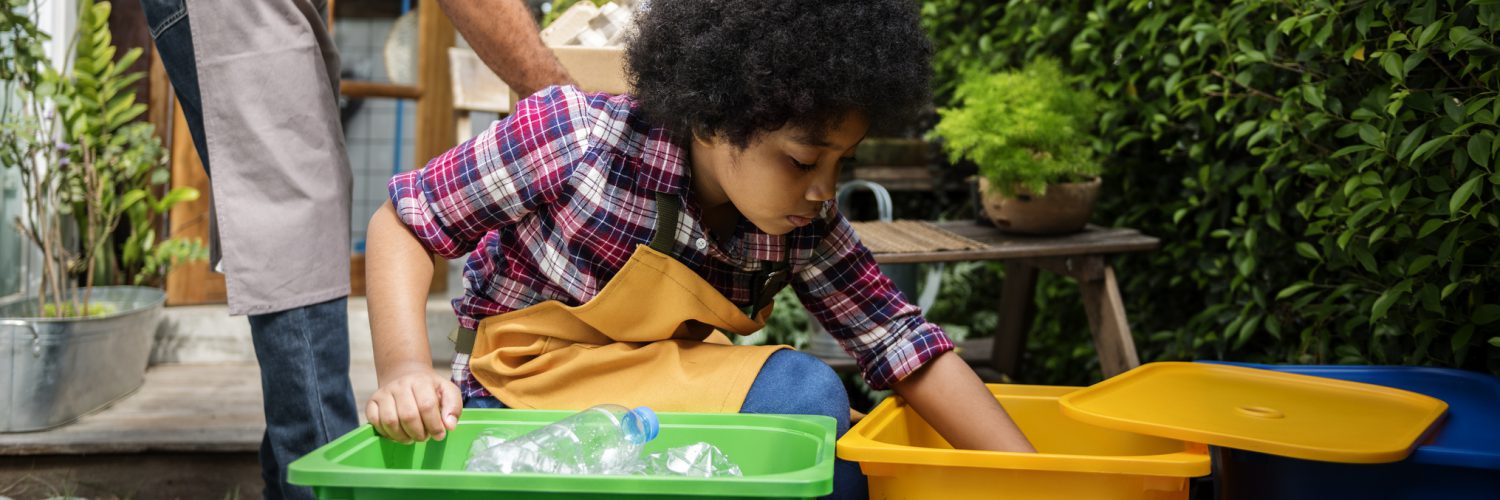The health of the planet has a big impact on our individual health and well-being. Pollution, litter and similar factors contribute to the deterioration of our environment, but they also play a role in our own physical and mental wellness. As an example, just think of how you feel when driving behind a big truck that’s putting off excess exhaust (read more from the CDC here). A lot of these issues stem from the release of carbon dioxide into the environment, which can be caused by transportation, decomposition of trash in landfills, clearing of land for production of food, and many other sources.
This is why you may hear about efforts to reduce our carbon footprint. Decisions we make throughout the day can add up to a larger footprint, such as driving versus taking public transportation, leaving lights on, throwing items in the trash versus recycling, and more. You can calculate your own carbon footprint via the Environmental Protection Agency’s website here.
This doesn’t mean you have to make huge changes! By taking small steps to lessen our individual impact on the environment, together we can make a big difference. Read on for tips to help minimize your own carbon footprint and improve your own health and that of the planet.
Reuse when possible. This is an easy first step to reducing your carbon footprint. Reusable bags, water bottles and similar items can drastically cut down on waste with little change to your day-to-day habits. Carry small, packable reusable bags in your car or bag to have one handy at all times. This can help cut down on plastic bags, plus some stores offer a discount for bringing your own bag (and some cities are beginning to do away with plastic bags altogether). Reusable water bottles made from BPA-free plastic, steel or glass, among other materials, can be easily refilled without having to buy bottled water or find a place to recycle the bottle.
Recycle. If you’re not already, recycling appropriate materials is a great way to cut down on trash heading to the landfill (and sometimes our oceans and other waterways). Contact your local municipality to determine what is or isn’t recyclable, and set up an easy system in your home to make sure anything that can be recycled is. If you’d like to go a step further, consider setting up a compost pile or contributing compostable materials to a community composting site. This can include food scraps, yard trimmings, paper napkins or towels, and much more. Instead of going to the dump, these materials can be converted into rich soil to help plants grow. To find a composting site near you, visit here.
Eat locally. Our food consumption stresses the environment in multiple ways. From clearing land to grow food, long drives to transport food from its source to the store, and excess packaging that ends up in the landfill, there are many points in the process where we can make positive changes. One of the easiest steps you can take is choosing to purchase meat or produce that has been raised or grown locally. You can support local farmers while reducing the amount of time it takes to transport the food, plus you know it’s fresh and in-season! Check out your neighborhood farmers’ markets or even go straight to the farm.
Reduce packaging. Oftentimes, our food is layered in packaging, some of which is unnecessary. To try and reduce the amount of packaging you receive, consider buying in bulk (a larger box of cereal uses just a small percentage more packaging versus two small boxes), or bringing your own bags to purchase loose items. For example, you can buy most produce, beans, nuts and other dried goods from bulk bins at many grocery stores and use your own bags to package the exact quantity you need – this not only reduces your packaging but cuts down on food waste. Do a tour of your nearby stores to see if any offer a bulk section.
Be conservative with power and water. Many of us don’t think twice about letting the water run while we brush our teeth or accidentally leaving lights on overnight or when we’re out, but by being more thoughtful about our energy and water consumption, we can help reduce our footprint and our bills! Try to cut down on super long showers most days, unplug electronics chargers when they’re not in use, and do a quick sweep of the house before bed or when heading out to make sure nothing has been left on. You’ll be surprised at how these small steps can have a big impact!
Consider alternate transportation. Depending on where you live, this can be a challenging step, but small changes can add up! If you live in a city with public transportation, try to utilize trains or buses instead of driving your own car, cutting down on emissions into the environment. Alternately, consider biking or walking if your destination is close by. Another idea is to carpool if you and a friend or coworker are headed in the same direction.
It doesn’t take huge changes to have a positive impact on the health of the environment. Choosing to take small steps when possible can contribute to improvements for the planet as well as the health of you and your family.



